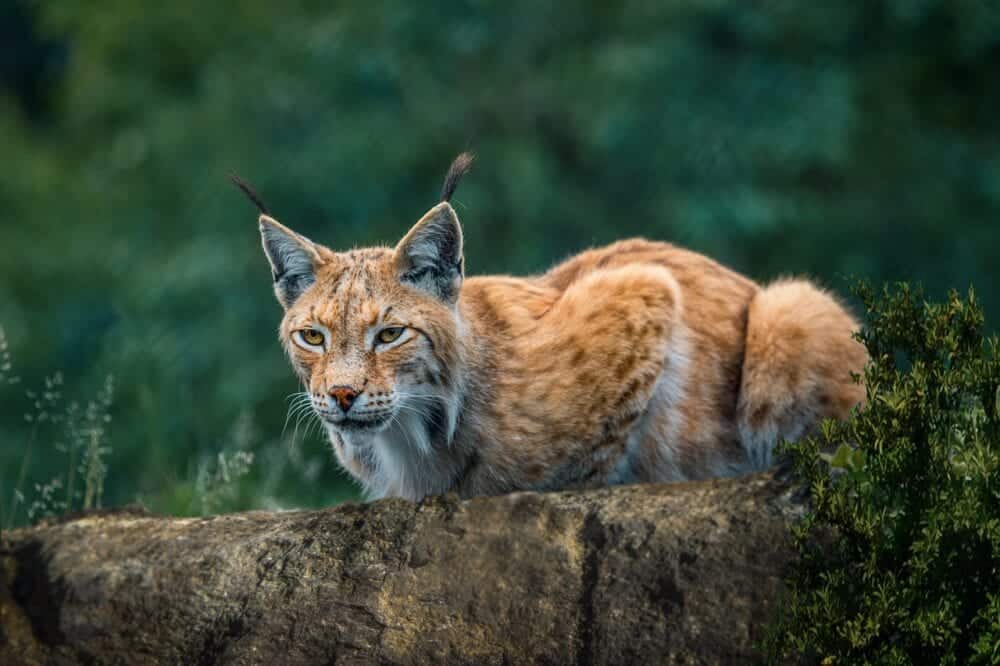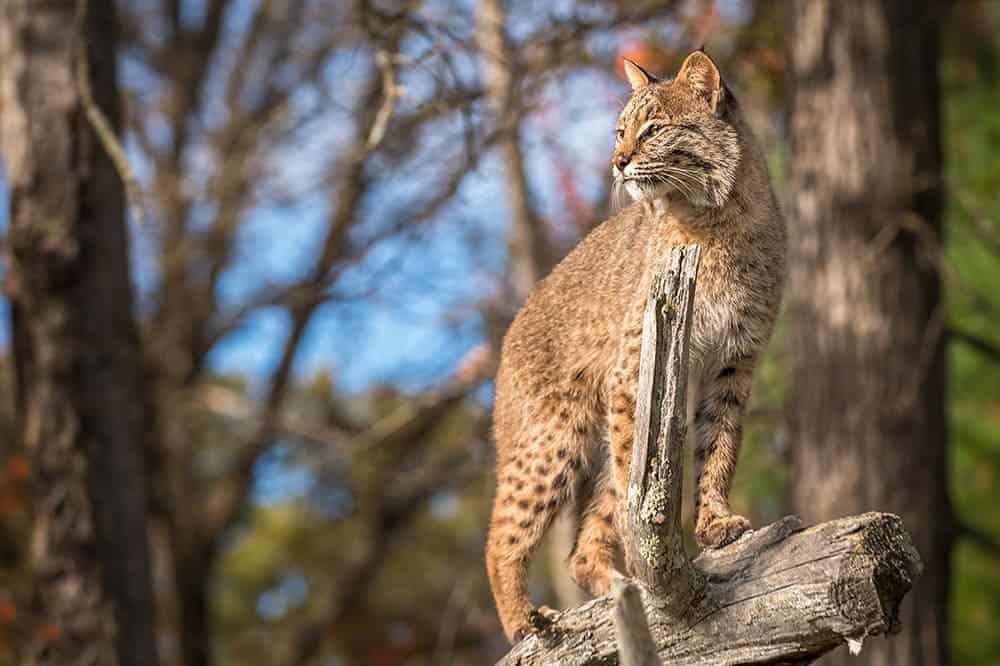The United States is the home of a few wild cat breeds, but have you ever wondered what types are native to Mississippi? Surprisingly, only a single type of wild cat breed lives in Mississippi—the bobcat! Cougars (also known as panthers or pumas) used to also be native to the area, but due to habitat changes, they haven’t been spotted in the state in decades.
So, what does a bobcat look like, and how will you know if you’ve stumbled upon one? Here’s how to recognize one of these wild cats (and what to do if you see one). Read on!

Bobcat

| Scientific Name: | Lynx rufus |
| Weight: | 30 – 40 lbs |
| Habitats: | Pine forests, swampy bays, heavily wooded areas |
The bobcat may look like a large domestic cat, but they definitely aren’t a cat you want to approach! That doesn’t mean they are necessarily a threat to humans—while these felines often live near areas with people in them, they want absolutely nothing to do with us if at all possible. That said, bobcats are still wild animals and will attack if provoked or approached while they have young with them. So, remember to admire these cats from far away and not up close.
How can you recognize a bobcat? Though they resemble large domestic felines, the bobcat is actually medium-sized for a wild cat. The main difference you’ll see between them and your kitty at home is the bobcat will have a tail that is bobbed (hence, their name).
You can also tell these cats by the color of their coats—tan to brown with undertones of red—as well as by the markings on the coat in black or dark brown and usually in the shape of stripes or spots. Finally, these wild cats are quite recognizable due to the tufted fur around the face; these tufts can be found on the ears and on the side of the face (where they resemble mutton chops!).
You’ll find the bobcat in a variety of habitats in Mississippi, but often in moderately wooded areas, as key aspects required in a bobcat’s habitat are cover that is dense and protection from the elements. They are also quite territorial, preferring to stick to their home areas. These felines hunt at night—mostly smaller prey such as rodents (though occasionally, they might go after an animal like a deer).
What to Do if You Come Across a Bobcat
Chances are low you’ll ever come across a bobcat in Mississippi since they avoid humans as much as possible, but there is a slight chance. If you do find yourself coming face to face with one, here’s what you should do to stay safe.
- Keep calm. Panicking is going to make the situation worse!
- Stay far away. You don’t want to get close enough to a bobcat that you provoke it, causing it to attack, so keep your distance.
- Get further away. Even if you’re fairly distant from the bobcat, you still want to put more space between the two of you. Just remember to do this very slowly; going off at a run could very well trigger the feline’s predator instinct, making them pursue you. Also, don’t turn your back to the cat as you increase distance. Keep your eyes on them at all times.
- Make noise. If you make enough noise, you could scare the bobcat away. Yell or bang items together and make as large a racket as possible.
- If a bobcat makes it onto your property (more likely if you live on partially exposed farmland or something similar), you’ll want to contact your local Department of Fish and Wildlife Service to safely remove the animal.


Conclusion
While some states have several native wild cat species, Mississippi only has one: the bobcat. Cougars used to live in the state once upon a time, but due to loss of habitat, they’ve moved on to other areas. While you likely won’t ever see a bobcat, as they prefer not to be around humans, there’s a small chance you might happen upon one (particularly if you’re a hiker). If this happens, you should be extremely careful and remember that these felines might look like large domestic cats but are indeed wild. That means keeping your distance and backing away slowly till you’re out of the bobcat’s sight.
Related Reads:
- Lynx vs. Bobcat: The Differences Explained (With Pictures)
- Bobcat vs House Cat: The Differences Explained (With Pictures)
Featured Image Credit: Geoffrey Kuchera, Shutterstock
